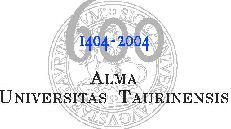
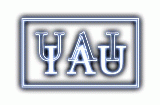


(1) (2)
(2) (3)
(3)
(1) The gas distribution within a (192 h-1Mpc)3
simulated volume of the Universe. Colour map according to the gas
temperature (Borgani et al. 2003, astro-ph/0310794). Courtesy of K.
Dolag, Dipartimento di Astronomia, Università di Padova, Italy
(2) The Coma cluster. Courtesy of O. Lopez-Cruz et al.,
INAOEP, Mexico
(3)Simulation of two interacting galaxies. Courtesy of
V. Springel, Max-Planck-Institut für Astrophysik, Garching, Germany
Con il patrocinio di: Consorzio Interuniversitario Fisica Spaziale; Osservatorio Astronomico di Torino; Alenia Spazio; Camera di Commercio, Industria, Artigianato e Agricoltura di Torino; Fondazione CRT; Compagnia di San Paolo; Città di Torino; Provincia di Torino; Regione Piemonte
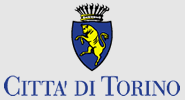
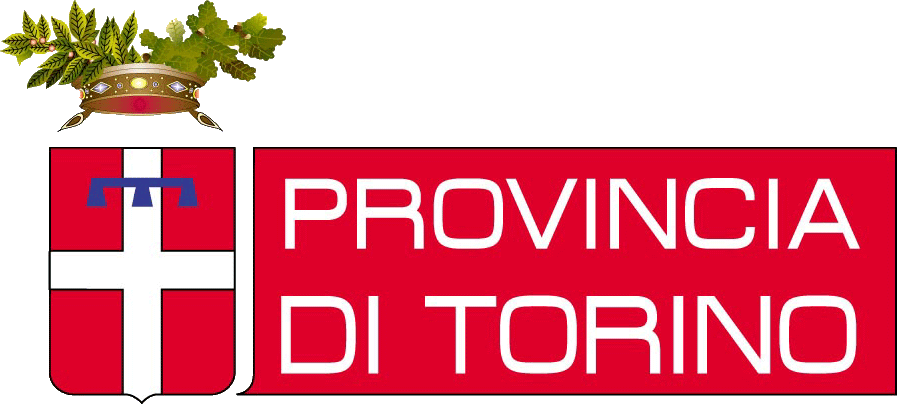

![]()


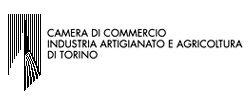

![]()
Scientific
Organizing Committee: A. Diaferio
(Italy - Chair), M.J. Geller (USA), G. Kauffmann (Germany), T. Kodama
(Japan), D. G. Lambas (Argentina), A. Reisenegger (Chile), E.
Salvador-Solé (Spain), R. van de Weygaert (Holland), H. K. C.
Yee (Canada)
Local Organizing Committee: C. Casacci (Alenia Spazio - CIFS), A. Diaferio (Chair), A. Ferrari, S. Massaglia (U. di Torino), G. Murante (Oss. Astronomico di Torino)
For any information, please contact: iauc195 at ph.unito.it
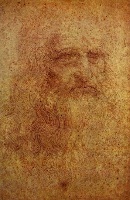 Leonardo da Vinci
self-portrait, Biblioteca Reale, Torino.
Leonardo da Vinci
self-portrait, Biblioteca Reale, Torino.
Galaxies and the intergalactic medium dramatically change their properties between the inner core of clusters and the large-scale field. The transition between these two limiting environments occurs in the external regions of galaxy clusters.
The traditional difficulties at collecting information in these regions have been recently overcome by extensive surveys of the external regions of nearby clusters and by the development of wide-field imaging and spectroscopic techniques that can be applied to clusters at moderate redshift.
Do we understand the formation of clusters and galaxies? How are their properties linked to the large-scale matter distribution? How can we detect the transition between the hot intracluster medium and the presumably warm, diffuse distribution of baryons in the intergalactic medium? What specific questions can we hope to address with the online and future multi-wavelength surveys?
This Colloquium will focus on these and related questions by discussing the current observational evidence, the most recent theoretical models, and the strategies necessary to unveil the many processes which connect the formation of the large-scale structure to galaxy formation and evolution.
(check here for a more detailed scientific rationale)
The cosmic web
Superclustering;
Interacting clusters; Velocity fields; Voids; Warm and hot
intergalactic medium
S. Bardelli, J.
Colberg, I. dell'Antonio, R. Juszkiewicz, J. Kaastra, M. Plionis, S.
Shandarin, M. Vogeley
Formation and evolution of galaxy clusters
Clusters at
low and high redshifts; Wide-field imaging and spectroscopy; Mass and
light estimates; Gravitational lensing; Thermal and non-thermal
processes in the intracluster medium; Mass accretion onto clusters;
Cluster formation modelling
M. Balogh, H.
Böhringer, G. Brunetti, K. Rines, P. Schneider, R. Sheth, V.
Springel, R. Sunyaev, G. Tormen, T. Treu, M. Voit, H. Yee
Formation and transformation of galaxies
Galaxy
formation and evolution; Connection between galaxy properties and
environment; Interacting galaxies
A. Benson, A.
Biviano, E. Ellingson, T. Kodama, B. Moore, M. Verheijen
There will be 35min invited talks and 20min contributed talks.Times include 5min discussion. There will be a poster section. Each poster will have an area 100cm x 70cm (height x width) available. You are most welcome to submit your abstract by registering here by February 1st, 2004.
 J.-L. Lagrange
J.-L. Lagrange
Torino is a more than two-thousand-year old town and is the capital of Regione Piemonte, in the north-western part of Italy. It was the capital of the Kingdom of Sardinia till March 17, 1861, and then the capital of the Kingdom of Italy till 1864, when the capital was moved to Florence (and then Rome in 1870). A. Avogadro and J.-L. Lagrange, among other outstanding personalities, were born and worked in Torino.

In Torino you can find the world-wide second-richest Egyptian Museum after Cairo, the outstanding Italian National Museum of Cinema (the Italian cinematography was born in Torino at the beginning of the 20th century), and a rich Gallery of Modern Art (GAM).
Torino and Piemonte also are unique for their wines, like Barbaresco, Barolo, Dolcetto, and Nebbiolo, to mention a few, and food:grissini, the world-wide famous bread sticks, were created here for the first time in the 17th century, and gianduiotto is one of the many different kinds of superb chocolates that came out of the imagination of the local confectioners.
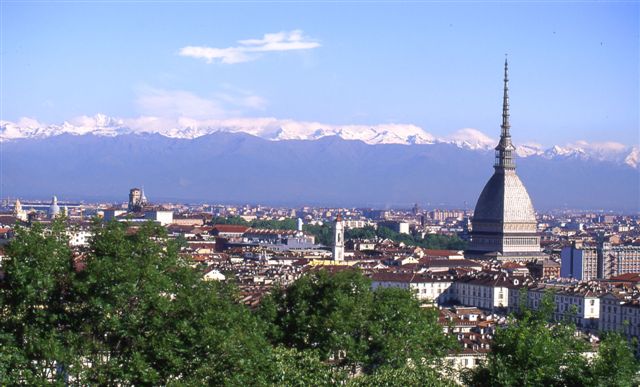
The
western Italian Alps are an hour driving from Torino that will host the Winter Olympic
Games in 2006.
You can look at this town from many unespected perspectives. In Torino quite a number of cultural and social events are scheduled all around the year. We encourage you to stay longer than the five days of the colloquium to enjoy Torino the way you prefer most.
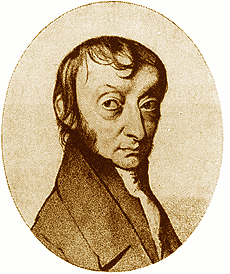
DIRECTIONS:
The conference will be held at the congress center Torino Incontra, via
Costa 8, in the very center of Torino, within a walking distance from
both the main train station Torino Porta Nuova and all the hotels where we have reserved rooms for the
Colloquium participants. Getting
to Torino is pretty straightforward. If you fly to Torino
(International Airport Sandro Pertini in Caselle Torinese), you
can take a bus, run by the SADEM company, whose final destination is
the train station Torino Porta Nuova. The ride lasts 40 minutes and
costs 5.00 EUR. You have to buy your ticket before getting on the bus.
Tickets are available at the information booth or at the automatic
machine in the arrival hall of the airport, on the ground floor. A bus
leaves the airport every 30 or 40 minutes, depending on the time of the
day. You can also take a cab for 30 or 40 EUR, depending on the
traffic. We advice you NOT to take the train to town, because it leaves
you in the outskirts of town and you would need further transportations
to get downtown. Look here
for further information. Once in Torino, this map
will help you finding the location of the hotels and the congress center.
The night before the official start of the Colloquium, on Thursday March 11th at 5:45pm, in the Teatro Colosseo, via Madama Cristina, 71, Rashid Sunyaev will deliver a public lecture on the Sunyaev-Zeldovich effect within the series Giovedì Scienza, a series of popular science lectures which has been very popular in Torino for the last 17 years. Everybody is welcome to attend.
The reception in honour of Rashid Sunyaev and the Colloquium welcome party will take place after the lecture, on Thursday March 11th from 8:00pm on, in the hall of the congress center Torino Incontra.
We plan to have the Colloquium banquet on Monday March 15th at 8:00pm in the historical Palazzo Barolo, an aristocratic palace built in the XVII century, home of the Marchioness Giulia di Barolo (1786-1864), famous both for her support to the poors and the wine of her cellars. Before the banquet, we will enjoy a guided tour of the palace.
We have reserved a number of rooms in a few hotels for the participants in the Colloquium. All the hotels are within a walking distance from the congress center. Look at the map for their location. You need to choose the hotel, fill out a form and send it directly to the hotel by February 1st, 2004. Go here to proceed.
If you are unhappy with our choices, you won't have any problem in finding other solutions.
Whatever your choice, we encourage you to book your room as early as possible!
If you are interested in participating in the Colloquium, please fill out this form by February 1st, 2004. There is a registration fee of 150 EUR (220 EUR for registrations after February 1st), which includes coffee breaks, lunches and a copy of the proceedings. The conference dinner requires an additional 50 EUR. Fees can be paid cash only at the registration desk upon arrival. Personal or travellers' checks, debit or credit cards and currencies other than euros will not be accepted.
Some travel grants also are available. Please fill out the IAU travel grant application, sign, and fax it to A. Diaferio, +39-011-658444, or mail it to A. Diaferio, Dip. Fisica Generale "Amedeo Avogadro", V. P. Giuria 1, I-10125, Torino, ITALY. Applications should reach their destination by January 16th, 2004. We regret to be unable to consider late applications.
Selected recipients will receive their grant in cash upon arrival and registration at the Colloquium.
According to the IAU rules, authors of invited and contributed talks and posters are requested to bring their complete manuscripts to the Colloquium. The manuscripts will be refereed by the SOC members during the Colloquium. The final manuscripts must be sent by e-mail to iauc195 at ph.unito.it by April 16th, 2004. Please note that this is a strict deadline. The official IAU Publisher will make the Proceedings available electronically and in book form by fall 2004. According to this procedure, authors will be entitled to list their publication on the IAU Colloquium proceeding book among their refereed papers.
The format for the manuscripts, as provided by the Cambridge
University Press, the publisher for IAU publications as of 2004, is
available here.
The number of pages for each type of contribution is as follows:
invited talk: 7 pages
contributed
talk: 5 pages
poster:
3 pages
We acknowledge the support of Torino Convention Bureau for much of the logistic organization.
Last modification by A. Diaferio: April 6th, 2004